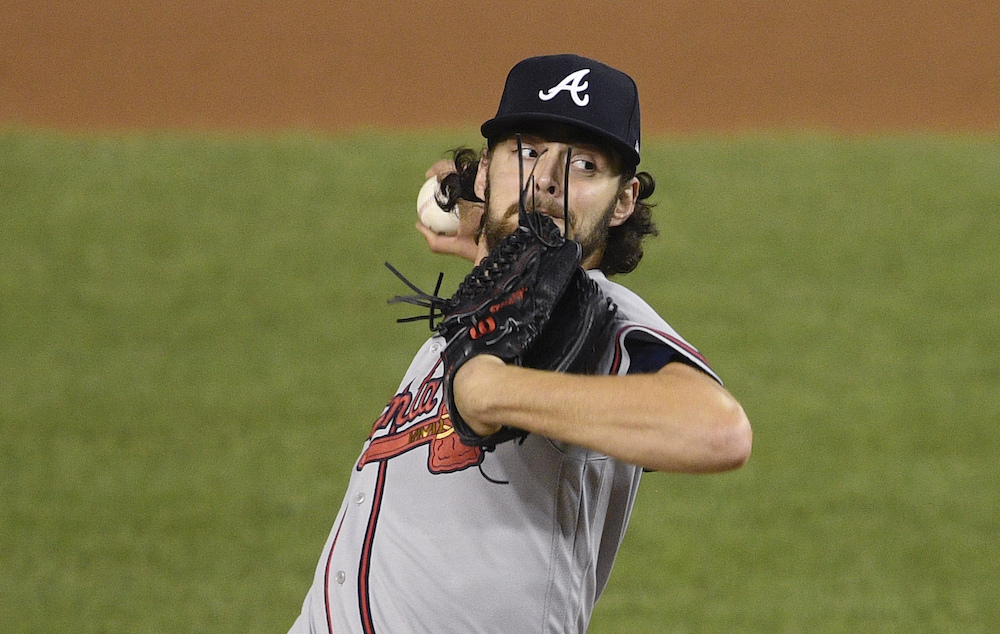
Ian Anderson is 22 years old. He’s been a major league pitcher for 35 days. He’s made six starts. So not too much to go on yet.
Background
Anderson was the first-round selection of the Braves in 2016. They had the third pick that year after going 67-95 in 2015. Anderson was chosen with the pick after the Reds took Nick Senzel. Anderson was a value pick signing out of high school way under slot price. He’s from New York, outside the state capital of Albany.
Anderson spent most of 2020 pitching at the Braves alternate site. He was called up to debut against the New York Yankees on August 26. By now, you probably know Atlanta’s starting rotation was decimated this year by injury and ineffectiveness. Of the six starters from the beginning of the season, only Max Fried is left. Ian Anderson is part of their front office’s efforts to remake its rotation on the fly. He gave up 1 hit in six innings to the Yankees.
2020 Stats
Keep in mind that Ian Anderson’s stats are based on six starts and 32 innings. That’s too small to draw many conclusions about how he’ll pitch against the Reds. Two of his six starts went fewer than five innings. In half his starts, he walked three or more hitters. But in addition to one-hitting the Yankees, he shut out the Marlins over 5.2 innings and held the Nationals to one hit (a bunt single) over seven innings.

He’s a ground ball pitcher and you’ll understand why when we get to his pitch portfolio. His ERA is lower than it would be with neutral luck because his BABIP is .250. That said, his xFIP (which doesn’t look at how hard balls are hit) was 22% better than league average, which is outstanding. Anderson’s xwOBA, which does account for hard-hit balls is excellent, in the top 5% by that measure. By comparison, Luis Castillo’s xFIP is 36% better the league average, the best on the Reds rotation. Castillo’s xwOBA is .260.
Portfolio
Ian Anderson has a three-pitch portfolio of Fastball, Changeup and Curveball.

The movement chart (right) shows Anderson’s pitch movement (solid circles) compared with league average (circles with spikes).
Fastball
Anderson throws his Fastball 47% of the time. It averages 94.1 mph velocity and reaches 96 mph. The word most commonly used to describe it is “downhill.” Anderson is 6’3″ and uses his height to leverage the downhill angle of his low-spin Fastball. Anderson’s Fastball spin is in the bottom 10%.
We’ve written a lot this year about Reds pitchers who have high spin rates on their Fastballs. High spin rates (it’s backspin on fastballs) stop the ball from dropping as fast. Batters swing under the ball or pop it up. These pitchers also tend to induce more fly balls than grounders on their Fastballs.
Like Max Fried, Atlanta’s Game 1 starter, Ian Anderson’s Fastball is designed to do the opposite, to fall and produce ground balls.
Changeup
Anderson’s second pitch is an 87 mph Changeup which he has thrown 31% of the time. Anderson has developed his Changeup this year and it’s become a strong put-away pitch for him. He has a 40% Whiff rate and batters have an xBA of .175 on it.
Curveball
Anderson’s Curveball is his third pitch although for a good part of his minor league career is was his second best. It’s most effective when he throws it down to look like a low strike only to have it drop into the dirt. It has a low spin rate, in the bottom 10 percent of league curves. It has less vertical movement and horizontal movement than average. It has induced a 40% Whiff rate. Keep in mind we’re only talking about 120 pitches.
Bottom Line
With a portfolio dominated by Fastball-Changeup, Ian Anderson is an interesting match up with the Reds Luis Castillo. Castillo has thrown those two pitches 82% of the time compared with 78% for Anderson.
Ian Anderson is still like something out of Forest Gump’s box of chocolates. His walk and strikeout numbers have fluctuated from game to game. On the one hand, he’s a premium prospect off to a great start in a brief major league career. Anderson has had a couple dominating performances already. But his experience is quite limited — think Tejay Antone, who has more IP than Anderson — and his pitches don’t have the movement or velocity you would expect from a pitcher with his excellent outcomes.
Even though it’s not clear what the Braves will get from Anderson today, he’s earned the start with an impressive debut month.


